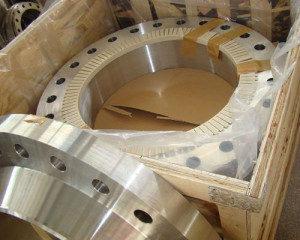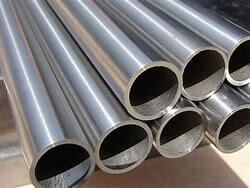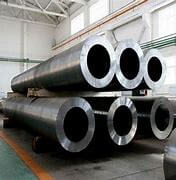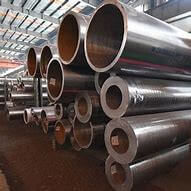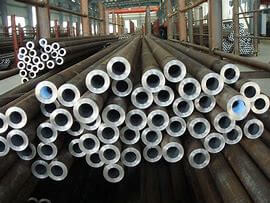Inconel 625 is a nickel-based superalloy known for its excellent strength, corrosion resistance, and high-temperature capability. It is often used in demanding applications in industries such as aerospace, chemical processing, and marine engineering. Here are some key features and properties of Inconel 625:
Chemical Composition:
– Nickel (Ni): 58.0% min
– Chromium (Cr): 20.0 – 23.0%
– Molybdenum (Mo): 8.0 – 10.0%
– Iron (Fe): 5.0% max
– Niobium (Nb) + Tantalum (Ta): 3.15 – 4.15%
– Titanium (Ti): 0.4% max
– Aluminum (Al): 0.4% max
– Carbon (C): 0.1% max
– Manganese (Mn): 0.5% max
– Silicon (Si): 0.5% max
– Phosphorus (P): 0.015% max
– Sulfur (S): 0.015% max
Key Features and Properties:

– High Strength: Inconel 625 exhibits high tensile, creep, and rupture strength, making it suitable for high-stress applications.
– Corrosion Resistance: It offers exceptional resistance to a wide range of corrosive environments, including seawater, acids, and alkalis.
– High-Temperature Performance: Inconel 625 retains its strength and oxidation resistance at elevated temperatures, making it suitable for high-temperature applications.
– Fatigue Resistance: The alloy has good fatigue strength, allowing it to withstand cyclic loading and stress.
– Weldability: Inconel 625 can be readily welded using various techniques, allowing for easy fabrication and repair.
– Non-Magnetic: It is non-magnetic in nature, offering benefits in certain applications.
Applications:
– Aerospace: Engine components, turbine blades, exhaust systems, heat shields, and combustion liners.
– Chemical Processing: Reactors, vessels, valves, and piping systems handling corrosive chemicals.
– Oil and Gas: Offshore and onshore components exposed to corrosive environments and high temperatures.
– Marine Engineering: Propeller blades, seawater piping, and marine exhaust systems.
– Power Generation: Gas turbines, steam turbines, and heat exchangers.
– Nuclear Industry: Nuclear reactor components, fuel handling systems, and waste processing equipment.
Inconel 625 is available in various forms, including sheets, plates, bars, pipes, tubes, and fittings, to cater to different application requirements. It is essential to refer to the manufacturer’s specifications and data sheets for precise composition and detailed mechanical properties of specific Inconel 625 products.
Inconel 625 flange fittings are specific types of fittings, designed to connect pipes or equipment with flanged ends in systems where Inconel 625 material is required due to its excellent corrosion resistance and high-temperature capability. Flange fittings provide a strong and leak-proof connection between pipes, valves, or other components.
Here are some key points about Inconel 625 flange fittings:
1. Material: Inconel 625 flange fittings are made from the nickel-based superalloy Inconel 625, which offers superior corrosion resistance to various corrosive environments, including acids, alkalis, and seawater. It also provides excellent strength and high-temperature performance.
2. Flange Types: Inconel 625 flange fittings are available in various flange types to suit different application requirements. Common flange types include:
– Weld Neck Flanges: These flanges have a long tapered neck that provides reinforcement and reduces stress concentration at the connection. They are suitable for high-pressure and high-temperature applications.
– Slip-On Flanges: Slip-on flanges have a slightly larger diameter than the pipe, allowing the pipe to slip into the flange for easy alignment and installation. They are commonly used in low-pressure systems.
– Blind Flanges: Blind flanges are solid discs used to close or seal the end of a pipe or vessel. They are commonly used for maintenance purposes or when future connections may be required.
– Threaded Flanges: Threaded flanges have internal threads that allow them to be screwed onto the pipe. They are suitable for low-pressure applications and where disassembly may be required.
– Socket Weld Flanges: Socket weld flanges have a socket or bore that is used to insert the pipe, and then fillet-welded for a secure connection. They are commonly used in small-diameter, high-pressure systems.
– Lap Joint Flanges: Lap joint flanges consist of two parts – a stub end and a loose backing flange. They are used in systems requiring frequent dismantling and where alignment is critical.
– Orifice Flanges: Orifice flanges are used in flow measurement applications. They have a concentric or eccentric bore with provisions for installing orifice plates.
3. Sizes and Pressure Ratings: Inconel 625 flange fittings are available in various sizes, ranging from small diameters to large dimensions, to accommodate different pipe sizes and system requirements. They are also rated for specific pressure classes, indicating their pressure-bearing capacity.
4. Standards and Specifications: Inconel 625 flange fittings are manufactured to meet industry standards and specifications such as ASME B16.5, ASME B16.47, API 6A, and DIN standards. These standards define the dimensions, materials, pressure ratings, and testing requirements for flange fittings.
When selecting Inconel 625 flange fittings, it is essential to consider the specific application requirements, such as the operating conditions (pressure, temperature, corrosive environment), pipe size, and system compatibility. Consulting with a reputable manufacturer or supplier who specializes in Inconel 625 flange fittings can help ensure the appropriate selection and proper installation of the fittings for your specific needs.
